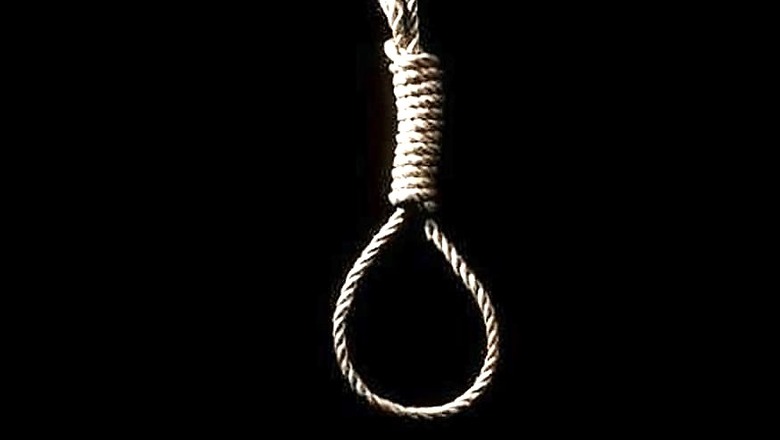
views
Every now and then, a mass public hysteria is whipped up, with politicians and the public baying for the blood of criminals guilty of heinous crimes. When Nirbhaya was brutally raped and murdered in a moving bus in Delhi, India rose in anger and demanded death for the convicts. Four of them were sentenced to die. One convict died during the trial, and another, a teenager, walked out free after a three-year incarceration.
And now, with child rapes seemingly on the rise, cries of death for rapists are being heard loud and clear, and the Central Cabinet has passed an Ordinance amending the Protection of Children From Sexual Offences Act to make it mandatory for courts to award capital punishment to those found guilty of raping girls under 12.
While a survey conducted by LocalCircles found 76 percent of the people questioned agreed with the latest amendment, activists have condemned the Government move as populist. They felt that the existing law was good enough, but what needed to be tightened was investigation, conviction and, most importantly, effective policing to prevent crime.
This takes us to the vexing question of the relevance of the noose (practised in India and elsewhere) and the lethal injection/electric chair (in the USA, for instance). For years, the United Nations General Assembly has been adopting resolutions urging its member States to abolish the death sentence.
Admittedly, most nations have done away with executions – around 103 and still counting – but 56 still have this form of punishment on their statutes. Unfortunately, 60 percent of the world's population live in these 56 countries – which include China, India, USA, Japan, Pakistan, Bangladesh, Sri Lanka and so on.
While the latest poll in India – which may be far off the mark, for it could have been only some sort of sampling – talks of an overwhelming majority supporting the death sentence for rape, historically there have been protests against what many decried as “a tooth for a tooth and an eye for an eye” policy. Even in the 15th century, when Joan of Arc was accused of being a heretic and burnt alive, there were murmurs of dissent. Five centuries later, when the Vatican canonised her, it seemed too late to right a wrong.
This is precisely what I and many others have been contending. It is well within the realm of possibility that an innocent man or woman may be sent to the gallows. Interestingly, it was found in a 1987 study that 350 people condemned to die in the USA between 1900 and 1985 were actually innocent. Most lived, but 23 lost their lives!
In 2004, a residential building watchman, Dhananjoy Chatterjee, was hanged to death in Kolkata after he was found guilty of raping and murdering a teenage schoolgirl, Hetal Parekh. A Bengali film, Dhananjoy, made last year by Arindam Sil, shows through a fictionalised account how the police, the judiciary and the State could have erred in sending the poor watchman to the hangman. Throughout his 14-year-incarceration (which by itself could have been a full sentence), he had said a million times that he was innocent of the crime he had been convicted of. What is more, he also said that he was being punished because he was poor. Incidentally, Dhananjoy used the same famous words of an American Supreme Court judge, William Douglas, who quipped that “capital punishment was for those without a capital”. And Dhananjoy had no money, and his lawyer in the face of a dwindling flow of fees lost interest in the case. Which is precisely what Sil says in his movie while throwing up a theory.
This is quite probable in a country like India notorious for its corrupt judiciary, poor policing, etc. And then we have a community divided on class, caste and religious lines. In a scenario such as this, an error of judgement can happen, and an innocent human being can die.
What is far more important than all this, and which takes on humungous significance in the present explosive times, is that capital punishment can never be a deterrent. Many, many studies over many, many years have proved that the death sentence had never cut down the number of capital crimes. Some American states did away with the electric chair but found no significant rise in murders or rapes. And when they reintroduced it, there was no drop in major misdemeanours.
In fact, how does one prevent a crime of passion? Will a terrorist stop in his tracks fearing that he will be marched off to the gallows? Indeed, advocating death under Government supervision may be as foolish as suggesting that stockpiling nuclear weapons serves as a safeguard for peace.
Similarly, a man who rapes a child is not going to stop because he may be caught and a noose placed around his neck. On the contrary, he may also kill the child and hide the body hoping to erase any trace of his involvement.
The former Chief Justice of the Delhi High Court, Justice A P Shah, told a Press conference the other day that the new amendment would be “disastrous for the safety of children...Death penalty diverts attention from the problems ailing the criminal justice system such as poor investigation, lack of crime prevention and abuse of rights of the victims”.
Certainly, India must understand that capital punishment has no place in a civilised society, and Governments must realise that modern societal ills must be tackled with dignity. The noose is an easy option whose consequences – both short and long-term – can merely be disastrous.
(Gautaman Bhaskaran is an author, commentator and movie critic, and he may be e-mailed at [email protected])




















Comments
0 comment